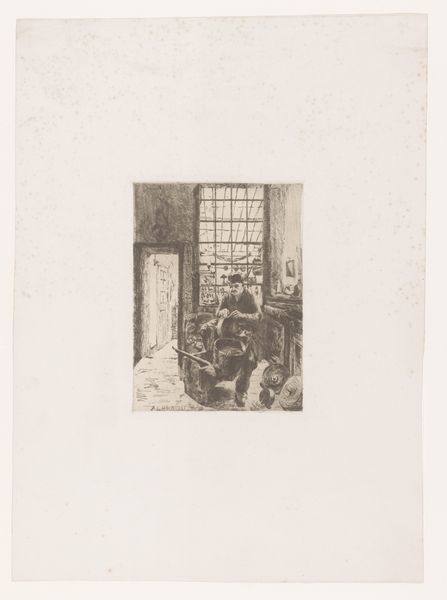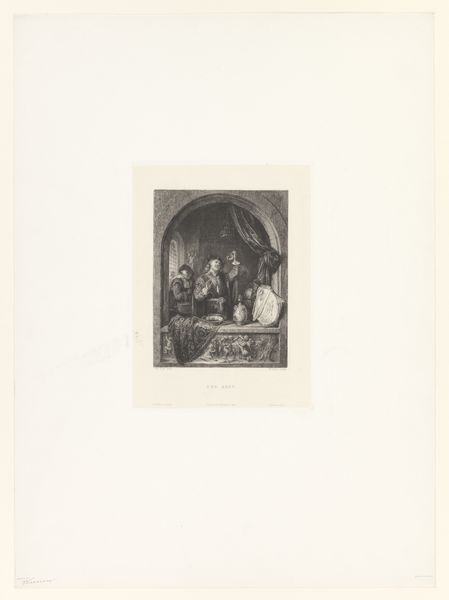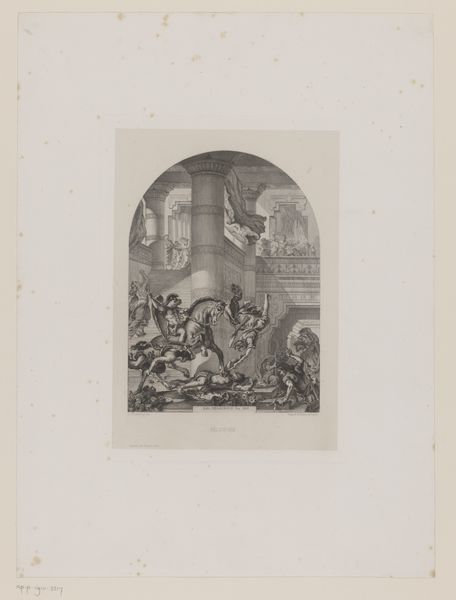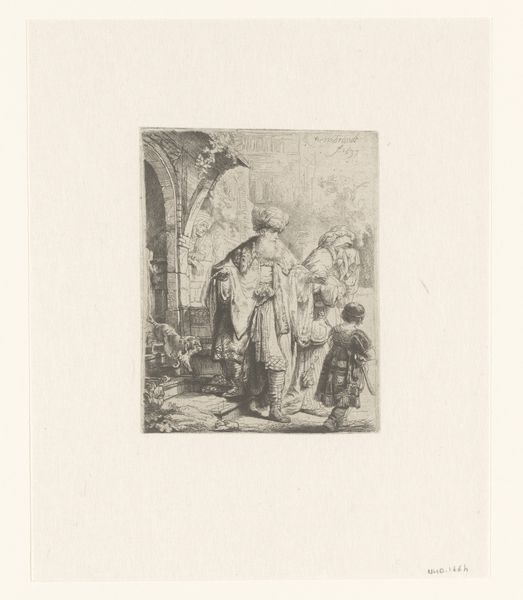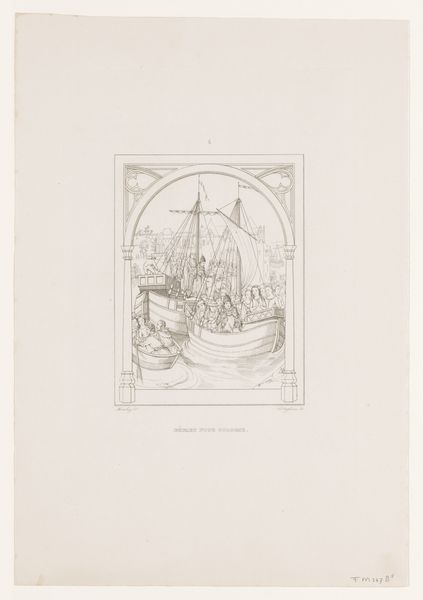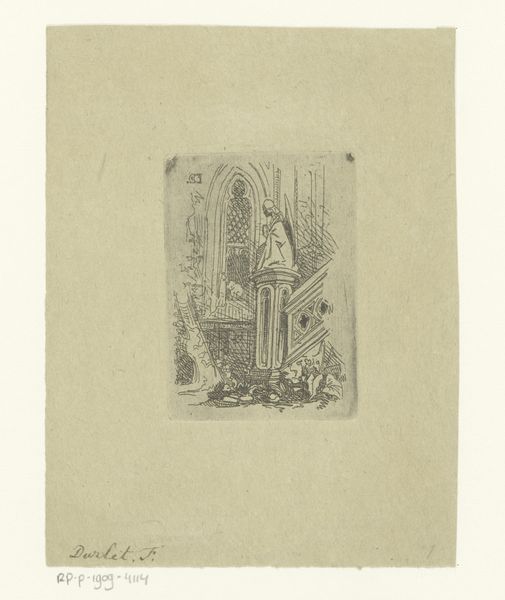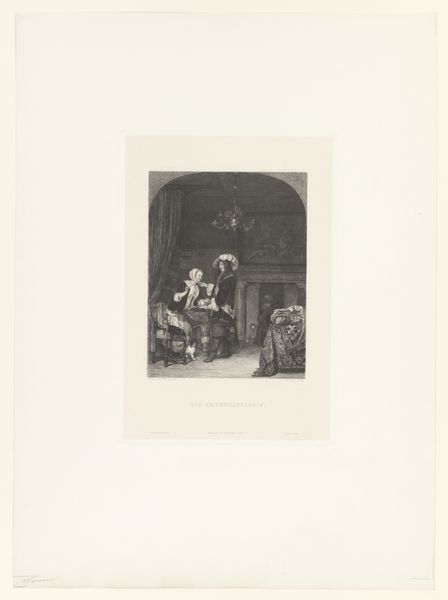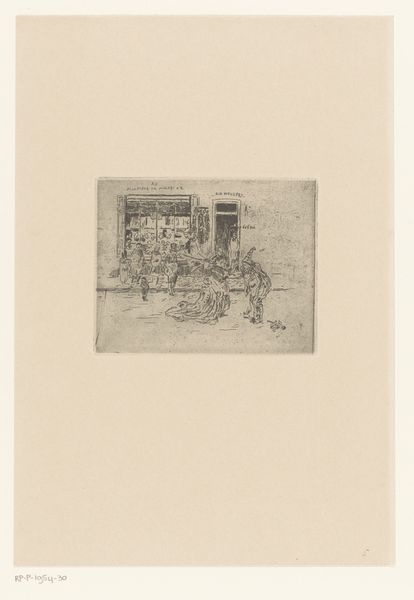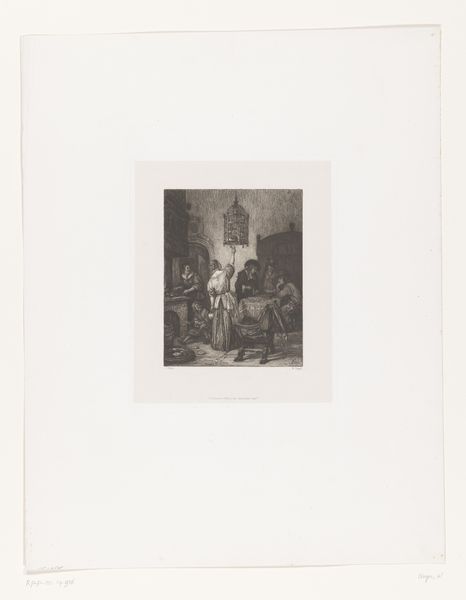
print, etching
#
medieval
# print
#
etching
#
landscape
#
genre-painting
#
realism
Dimensions: height 505 mm, width 331 mm
Copyright: Rijks Museum: Open Domain
Curator: This etching, dating between 1863 and 1898, captures "Interieur van de Sijpekerk in Nieuw-Loosdrecht" by Auguste Tilly. Look closely at the level of detail achieved through the print medium. Editor: There is an immediate sense of reverence. The somber gray tones contribute to the subdued, almost mournful atmosphere within this church setting. Notice how the strong verticals and architectural features frame the human activity below. Curator: Indeed. The artwork portrays a specific community within the walls of their house of worship. The scene depicted is not a formal service but most probably a local church meeting that gave individuals communal representation in social activities of that period. These social paintings reflect everyday stories. Editor: Speaking of depiction, observe the intricate etching lines – they skillfully convey depth and texture from the imposing pillars to the chandelier hanging overhead, providing an almost tangible reality to the church interior. Notice how the window seems to beckon as a gateway to the divine. Curator: Precisely. The setting isn't purely a visual one. It mirrors societal ideals of piety and collective identity of a late nineteenth-century European village that found solace and meaning through religious devotion during shifting sociopolitical transformations. The church wasn't just a sacred location; it symbolized social belonging. Editor: You can also analyze how the eye is drawn from the shadowed foreground, where we find these indistinct groups, moving upward to that illuminated window – the formal arrangement reinforces our connection to hope, guiding our eyes—and perhaps our spirits—skyward. Curator: And beyond mere technique, the choice of representing ordinary church folk underscores shifting dynamics during a period marked by secularisation where representations of such subjects were critical assertions that acknowledged individual agency and community existence at large. Editor: Overall, for me, the appeal lies not only in what Tilly depicts, but also in how he conveys the mood. His treatment creates something intimate despite that large setting within a community—I'm particularly taken by how effective black and white is when conveying nuanced emotion like hope and reverence, making this image memorable. Curator: From a historian's vantage point, reflecting upon its capacity to highlight critical periods of community formation as modernity unfolded offers enduring and significant understanding from past interactions. It’s always a learning opportunity regarding people's stories via spaces just as they envisioned their positions as individuals of impact through group involvement!
Comments
No comments
Be the first to comment and join the conversation on the ultimate creative platform.

